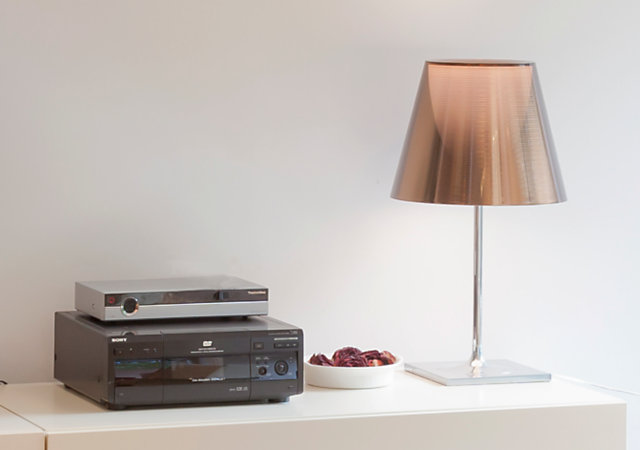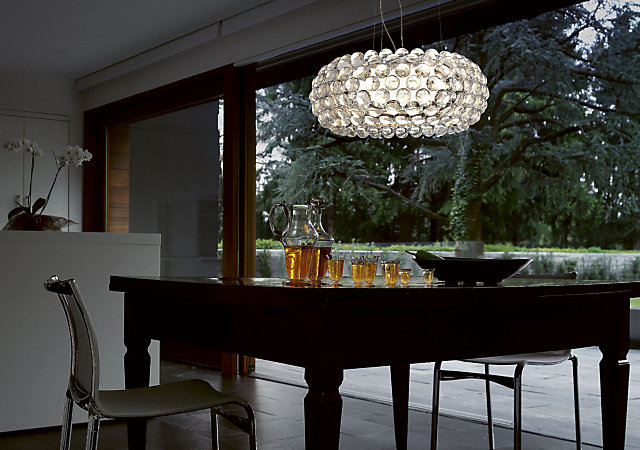What are the different light fixture types?
Are wall lights more suitable for my living room than ceiling lights? Did I choose the right pendant light for my dining table? And which lights can I use to optimally highlight objects such as pictures and paintings. There are many questions concerning the purchase of light fixtures: the selection of products is vast and the differences between the lights are considerable. In order to give you a better overview, we present the characteristic features of the various types of lights below. The decisive factors in this regard are the direction of light as well as the flexibility of the light fixture. By means of this article, we would like to provide some assistance to enable you to find out whether a luminaire is suitable for individual purpose. Furthermore, we will give you some helpful advice and recommendations for the application of the luminaires.

Table lamps
Table lamps are mobile and portable. They supply light wherever they are positioned. Standard models are shaded lamps and flexible desk lamps. The main benefit of table lamps is that you can control them directly from your armchair, bed or desk. Two different versions of table lamps are available: table lamps that emit their light downwards as well as upwards and table lamps that emit their light exclusively downwards.
View our product recommendations for table lamps

Floor lamps
Floor lamps are mobile and they supply light wherever you position them. It is beneficial, for example, that they can be controlled from the comfort of your own seat on a sofa or in an armchair. Floor lamps are better at providing ambient lighting than table lamps as they can be equipped with bulbs with higher wattages. Since the height of a floor lamp generally makes it impossible to directly look at the bulb, the risk of glare is prevented. A typical version of a floor lamp is an uplighter that emits its light upwards. Moreover, there are also shaded lamps which emit their light downwards and upwards as well as adjustable reading lamps which emit their light downwards.
View our product recommendations for floor lamps

Pendant lights
Pendant lights are attached to the ceiling and therefore save space. They usually are used to illuminate even surfaces such as tables and counters.
A typical version of a pendant light is a shaded light with the light being either emitted downwards or both upwards and downwards. Additionally, there are also pendant lights that are designed like uplighters which emit their light upwards; they thereby provide for
View our product recommendations for pendant lights
Ceiling lights
Ceiling lights are attached to the ceiling and therefore save space. In bathrooms and hallways, for example, they can provide for ambient lighting or illuminate certain areas such as tables, cupboards and pictures. Typical versions are ceiling lights which emit their light downwards, onto walls or in all directions.
View our product recommendations for ceiling lights
Wall lights
Wall lights Low-profile lights are particularly well suited for narrow rooms such as hallways or bathrooms. Wall lights can be used to create ambient lighting or to produce zone lighting around a mirror.
Wall lights typically emit their light upwards and downwards, solely upwards, solely downwards or in all directions.
View our product recommendations for wall lights
Furniture lights
Furniture lights are directly attached to pieces of furniture. This is where they provide zone lighting for defined areas. Furniture lights typically emit their light downwards. Such lights are often adjustable in order to allow the users to customise the light to suit their own requirements. .
View our product recommendations for Furniture lights





